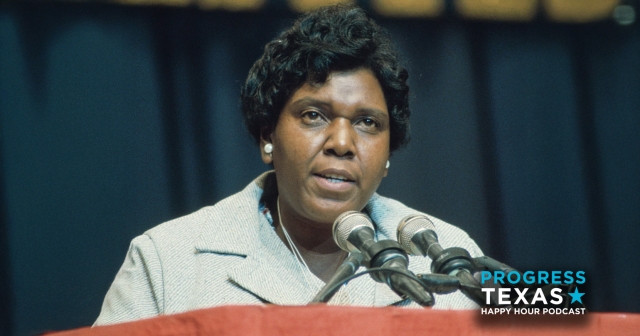Everything's Bigger: Including Texas' Maternal Morbidity Rates Post-Roe

Restricting access to abortions has correlated with an exponential rise in maternal morbidity rates in Texas at a 56% increase in deaths compared to a national average of 11% in the same time period, from 2019 to 2022. Since Roe’s overturn, Texas’ criminalization of abortion, and our state’s mandate of a near-total ban on the safe procedure (even in cases of rape and incest), the Lone Star State is now leading the charge in this preventable, tragic trend, disproportionately killing pregnant women of color.
Based on data released by the Texas Maternal Mortality and Morbidity Review Committee, Texas is more deadly to live in for pregnant mothers than elsewhere due to a lack of accessible and quality maternal healthcare which causes lethal, inequitable outcomes. The maternal death rate increase was highest among non-Hispanic Black women, women with a high school education or equivalent, and women ages 40 years and older.
For Black women, the chance of death from pregnancy and childbirth was 2.5 times as deadly as white women. For Hispanic women, the rate increased from 9 to 22.2. But, no one is exempt. White women saw a nearly 95% increase in the mortality rate over 3 years, and experts say this could be underreported in marginalized communities or forecasting a pattern to grow across all segments of Texas moms-to-be. Yet, data shows one clear point; our most marginalized women face higher levels of risk from the impacts of a now-proven-deadly, near-total abortion ban enacted by Texas MAGAs.
Why are so many Texas mothers at risk?
There are two major factors: Texas is one of the many states with a near-total abortion ban, and it also has the highest rate of uninsured people in comparison to other states. These compounding factors are making pregnancy even more dangerous.
Considering that Senate Bill 8 went into effect in 2021, banning abortion after approximately six weeks of pregnancy, you can determine that it is not a simple correlation. There appears to be direct causation between banning whole reproductive healthcare and abortions to an increase in maternal deaths. This effect was reinforced by further anti-abortion measures like removing Roe v. Wade’s federal protections in 2022. Visit our ROEvolution resources to understand the current state laws more clearly and to join the fight against these injustices!
Because of these dire conditions, many women are being denied access to basic prenatal care and struggle to secure appointments with OB-GYNs. These women include Kate Cox, who was forced to flee the state to save her life and get an abortion. This also includes Amanda Zurawski and more than 20 other women and doctors who seeked medical care for emergencies. In the state report, a quarter of women died due to infections, the most common cause of death, followed by cardiovascular conditions, obstetric hemorrhage, embolisms and mental health conditions. And now, even doctors like Austin OB-GYN Leah Tatum have seen an increase in women who are terrified of becoming pregnant, fearing that they’ll have no option but to suffer through it.
“Patients feel like they’re backed into a corner,” Tatum said. “If they already knew that they didn’t want to pursue pregnancy, now they’re terrified.”
But there’s more to it.
Although the rise in deaths is certainly attributed to Christian Nationalistic anti-abortion laws, the state of healthcare in Texas only exacerbates the issue. Women are at risk of death just for being pregnant and forced to find care out of state. But, this effect is only compounded by the affordability of healthcare and insurance in Texas.
Women in Texas have the highest uninsured rates, and this is no coincidence. States that refuse Medicaid expansion like Texas, under current Republican leadership, are putting women’s health, and all Texans, at a heightened risk. Despite a 2023 Texas Politics Project poll showing 73% of Texans support Medicaid Expansion, extremists continue to deprive us of accessible, affordable insurance coverage, which could save lives, benefit more than a million Texans, and even ban medical bankruptcies, rather than lifesaving care. If Texas were to expand the program, it would close the gap on healthcare inequality, nearly 75% of those covered would be people of color. This move would also bring in up to $2 million in federal funding, dollars we send to D.C. and leave on the table.
What do we do?
This is the heartbreaking and infuriating reality of women’s healthcare in Texas, and our Republican leaders are failing to act despite the clear need to allow and support whole reproductive healthcare. Look at what’s happened with our abortion rights as a warning of what’s to come with IVF, birth control, and no fault divorce. Do not let these horrible statistics be normalized!
These are people, your neighbors, mothers, daughters, and friends; this is a human rights issue and until their rights are restored, we put women’s lives on the line. Each and every one of us has an opportunity to advocate for abortion rights, whether it’s supporting a local abortion fund, text banking for pro-abortion candidates, or the vital task of voting this November to remove extremists from our state and federal leadership. Y’all, go vote.
What’s next:
- If we can’t change the minds of our elected officials, we must change the officials and vote for our rights this election! Get registered or check your registration status today at GoVoteTexas.org!
- Follow along the Zurawski v. Texas documentary, showcasing the real life impacts of Texas’ abortion ban.
Review our list of local abortion funds to support women near you.
DONATE
Your donation supports our media and helps us keep it free of ads and paywalls.








